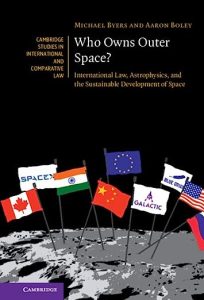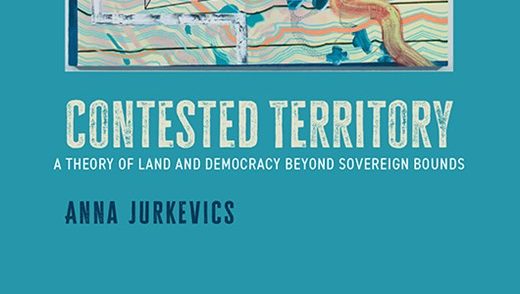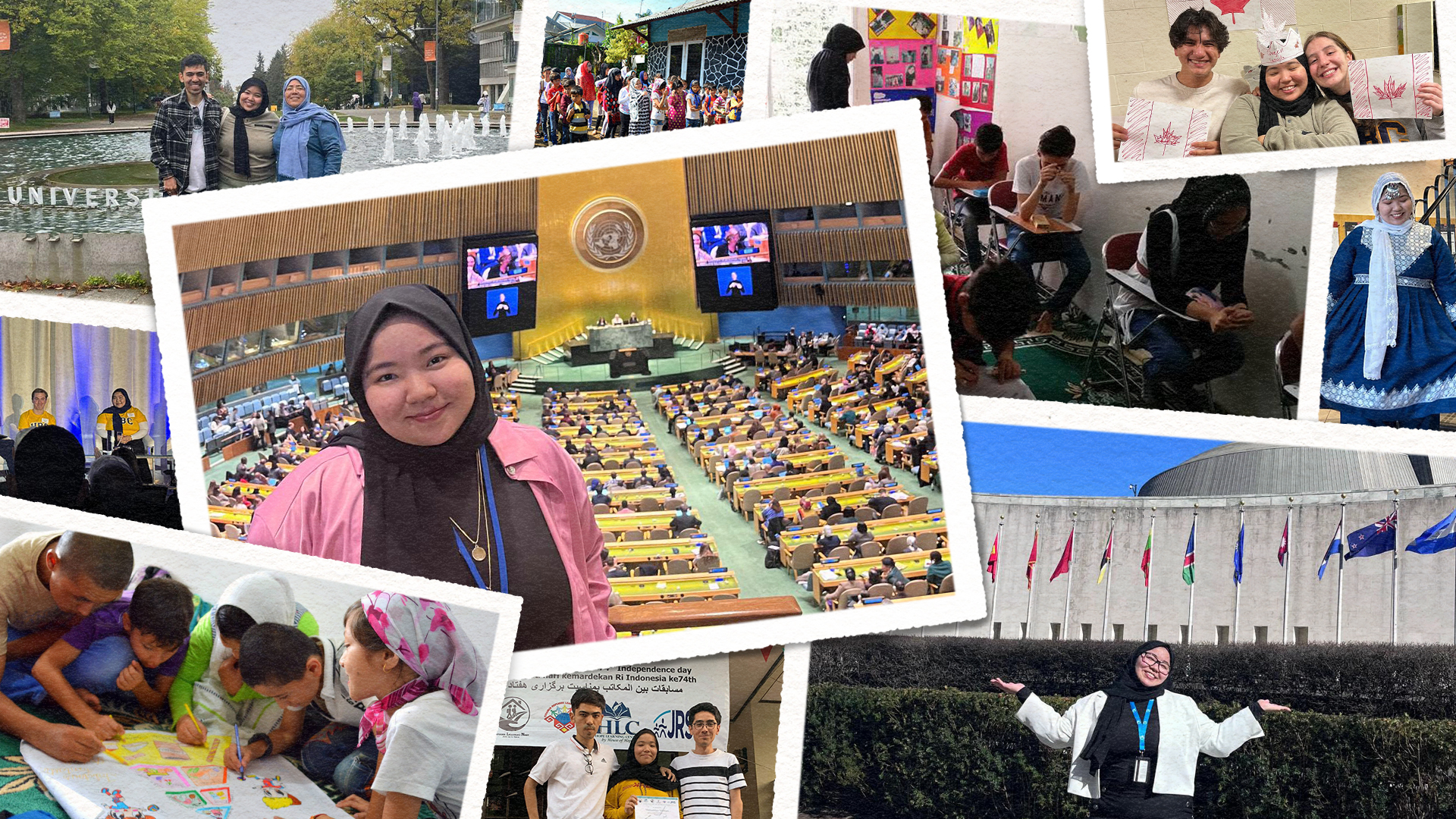

UBC Political Science professor Michael Byers has just published a new book: Who Owns Outer Space? The book, co-authored with UBC Astrophysics professor Aaron Boley, addresses a series of ‘grand challenges’—from space debris, to asteroid strikes, to anti-satellite weapons.
What inspired your new book ‘Who Owns Outer Space? International Law, Astrophysics, and the Sustainable Development of Space’?
The first re-landing of an orbital rocket took place at Cape Canaveral, Florida, in December 2015, when SpaceX brought a 19-story-high rocket body back to Earth and set it down gently on four legs. Thanks to my then 15-year-old son Cameron, who persuaded me to take him to the launch, I witnessed the event with my own eyes—and realized that SpaceX had fundamentally changed space exploration. Rockets can now be reused, instead of being discarded after just one flight. This has dramatically lowered the cost of accessing space, and indeed, since 2015 the number of active satellites has more than tripled, to over 6000, with tens of thousands of additional satellites already approved by national regulators.
As a result of that father-and-son trip, I began reading everything that I could find on space in my two academic disciplines – international relations and international law – and discovered that the best research and writing came from the 1950s and 60s. Given my past work on the law and politics of armed conflict, and the governance of the oceans and other areas beyond national jurisdiction, this combination of a half-a-century of academic inattention and the new tidal wave of space activity created a need for research and analysis that I was well-positioned to address.
How did you meet your co-author?
Philippe Tortell, who was at the time the Director of the UBC’s Peter Wall Institute, thought that Aaron Boley and I should meet because of our common interest in the opportunities and challenges emerging from the sudden growth of human activity in space. Aaron, who holds the Canada Research Chair in Planetary Astronomy and is an Associate Professor at UBC’s Physics & Astronomy Department, knew that this growth would raise multiple important issues of safety, sustainability and governance, but he lacked the background in international relations and international law to fully understand the interaction between state and economic interests, diplomacy, and international institutions and treaties. As for me, the more I spoke with Aaron, the more I realized that the greatest challenge for social scientists and legal scholar was understanding of the physical realities of space—basic orbital dynamics, for instance, or the effects of solar weather on satellites.
Aaron and I began collaborating on research and writing and immediately found that our new transdisciplinary partnership opened doors to top-tier journals like Science and Nature and funding from initiatives like the Canadian government’s New Frontiers of Exploration research fund. In 2018, we created the Outer Space Institute (OSI), which is a global, transdisciplinary network of space experts addressing grand challenges facing the continued use and exploration of space.
Our new book builds on our collaborative research. It harnesses the almost unique strength in issue-identification and transdisciplinary analysis provided by the OSI network, which we frequently mobilized in solutions-oriented workshops on emerging challenges. Examples include the international security and space debris risks posed by the testing of anti-satellite weapons, the casualty and environmental risks created when rocket bodies and large satellites are allowed to return to Earth in an uncontrolled manner, and the safety, sustainability and coordination challenges that will be encountered when states and companies begin mining the Moon, asteroids, and eventually Mars. The book provides readers with a comprehensive understanding of these challenges as well as actionable solutions to them.
The book is framed by an understanding that Earth and space are a shared environment, with human activities in orbit having direct consequences here on Earth—for instance, through the climate impacts of thousands of mostly aluminium satellites ‘burning up’ in the upper atmosphere each year. In this way, Aaron and I break away from the ‘big sky’ theory that sees space as an infinite resource. That same line of thinking is how the oceans ended up polluted with plastics.
How can humanity benefit from the developments happening in space while ensuring such developments are sustainable?
The 1967 Outer Space Treaty states that the “exploration and use of outer space…shall be carried out for the benefit and in the interest of all countries…and shall be the province of all mankind”. It also specifies that space, including the Moon and other celestial objects, shall not be subject to “national appropriation”.
One development that is testing this legal framework is space mining, which walks the line between the exploration and use of space and national appropriation. The United States, Luxembourg, Japan and the United Arab Emirates consider that space resources can be extracted and then owned without violating the Outer Space Treaty, and NASA is advancing this position through a series of non-binding bilateral agreements called the ‘Artemis Accords’. The other side of the debate is taking place in the UN Committee on the Peaceful Uses of Outer Space (COPUOS), which established a Working Group on Legal Aspects of Space Resources in 2021. China, Russia, and the G77 group of non-industrialized states all play active roles in COPUOS, and the use of consensus in decision-making ensures that the guidelines and treaties negotiated there have universal support.
Another development is the construction of ‘mega-constellations’ that provide global high-speed internet from thousands of satellites in low Earth orbit. This is of great benefit to rural and remote communities, as well as to Western militaries, but the sheer number of satellites creates a myriad of environmental impacts—from light pollution to space debris to atmospheric changes resulting from re-entries—that international law could address. Our book delves into these challenges, while offering realistic solutions to governments and the space industry.
The book addresses the possibility of armed conflict extending into the space domain. How would this look? How can it be avoided?
One way that armed conflict could extend into space is through the physical destruction of satellites that provide communications and high-resolution, real-time imagery to soldiers on the battlefield. Interference with satellites is already quite common, including through the jamming of signals and cyberattacks. But while the United States, China, Russia, and India have all tested ground-based missions as weapons against their own satellites, no country has ever physically struck another country’s satellite. Such strikes generate large amounts of orbital debris that indiscriminately threatens all satellites, and this physical reality has, so far, proven an effective deterrent against such actions.
Additional factors preventing the extension of armed conflict into space have included a series of Cold War treaties, including the 1963 Limited Test Ban Treaty, the 1967 Outer Space Treaty, the 1972 Strategic Arms Limitation Talks Agreement, and the 1972 Anti-Ballistic Missile Treaty. Most recently, more than a dozen states, including the United States and Canada, have unilaterally committed to never testing ground-based missiles as anti-satellite weapons. The OSI may have contributed to this development: In 2021, we organized an open letter to the president of the UN General Assembly, calling on states to negotiate a multilateral ban on the testing of anti-satellite weapons that create space debris. The letter was signed by former prime ministers, Nobel laureates, retired astronauts, and hundreds of other space experts.
Is there anything else that you’d like us to know about the book?
We’re excited that the book has been published ‘open access’, which means that the entire volume is available for free on the Cambridge University Press website. We paid the open access fee because we wanted the book to be available to everyone, everywhere, including students, space enthusiasts, and academics and government officials.


